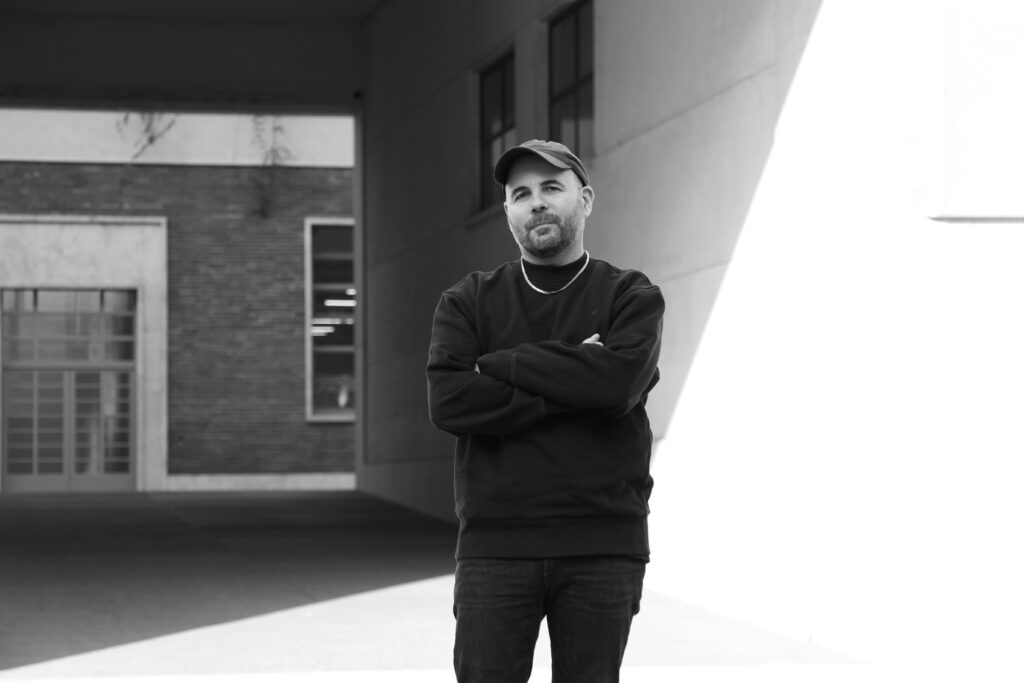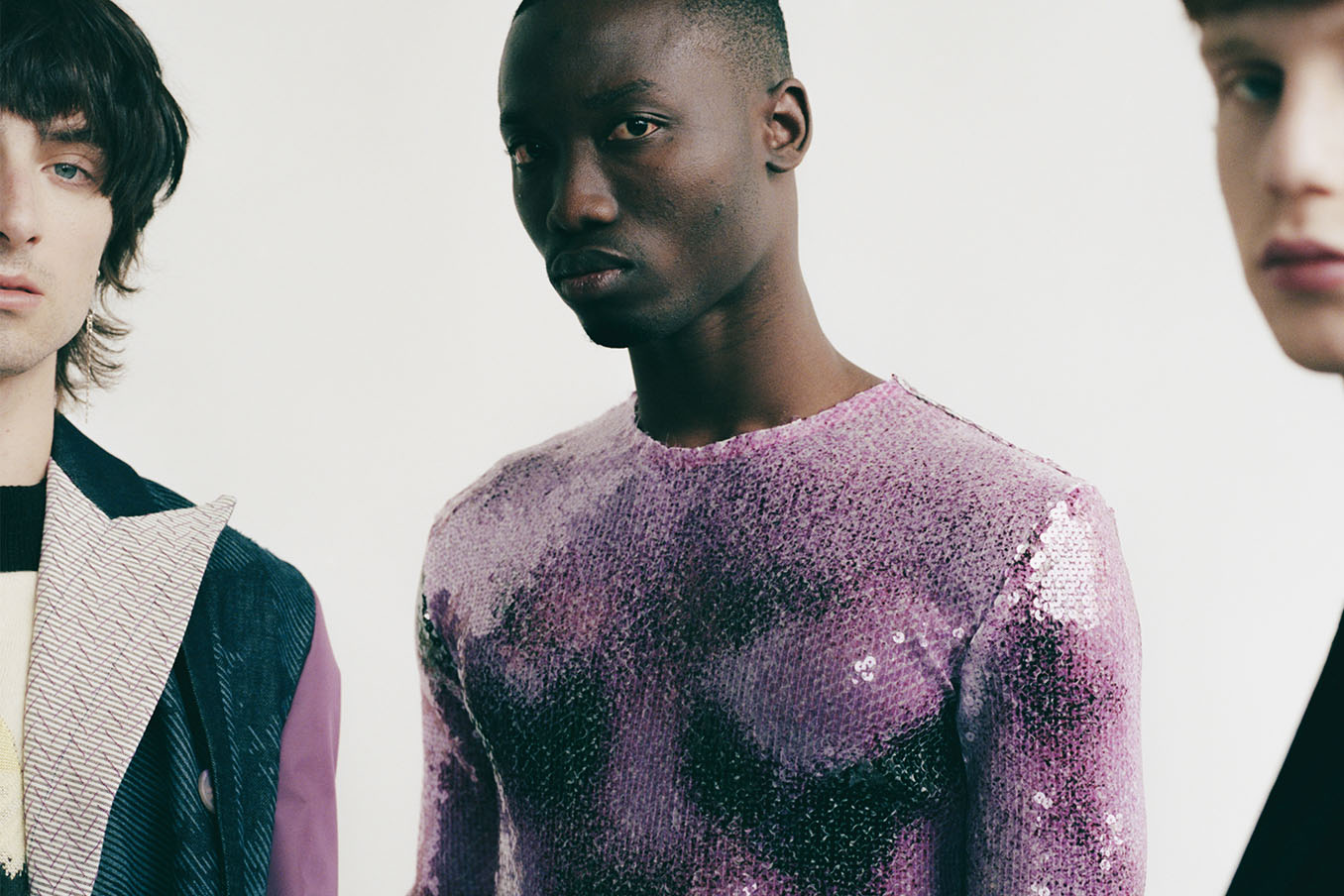In the ever-evolving landscape of brand management, mentorship plays a pivotal role in shaping the leaders of tomorrow. In a unique and enlightening opportunity, students from the Master in Fashion Brand Management have spent two days with adidas Originals’ Vice President of Product, Stefano Filippelli and Senior Global Product Marketing Manager, Fabio Minutoli.
“Do you have any questions?” Stefano asked at the end of the class, and immediately, a myriad of the Master in Fashion Brand Management student’s hands flew in the air with enthusiasm and genuine impatience. The speaker chooses someone at random: silence, all hands down, ready to climb back again at the next opportunity. “My question is quite bizarre and unconventional. A month ago, something very unusual happened. It’s morning; I’m home, ready to go out, fully dressed and prepared, I step into the kitchen to say bye to my parents. Everything is normal, right. After the natural and usual greeting, with almost one foot outside, I noticed the unimaginable. My dad had on the same shoes as me! He wore a suede navy blue colorway compared to my black and white version. I remained in complete silence and astonishment for a moment. My dad and I have never purchased and used the same apparel.
So, can you explain to me, “Why do my dad and I both choose to wear Sambas?”
Stefano and Fabio elaborated how they achieved that moment of astonishment and surprise. Within two days, they unravel the strategies of adidas and the ability of the collective memory and culture of a brand to connect generations with a shoe. They brought us to understand “Why me and my dad are wearing Samba”.
They both presented themselves in a very professional, playful and involving way. In our encounter with Stefano Filippelli, Global Vice President of Product at adidas Originals, he unveiled a professional journey marked by innovation and commitment to shaping the future of the global sporting goods industry. Hailing from Italy and embraced by Germany, Stefano’s cultural duality mirrors his ability to blend creativity with marketing dynamics seamlessly. A food, art and music enthusiast who enjoys immersing himself in stimulating cultural and emotional contexts. During his presentation to us, he highlighted his dedication to the growth of individuals within the industry. He underscored his commitment to giving back all the knowledge he has granted. Reinforcing the importance of collective growth and knowledge-sharing within the dynamic landscape of sporting goods.
Alongside Stefano, we met Fabio Minutoli —Senior Global Product Marketing Manager at adidas Original. A previous graduate of Polimoda, from the Master in Luxury business class of 2019, with a prior degree in economics at Modena University. An alumnus that showcases fashion expertise and our university’s business strategies within the luxury industry. He has a global perspective and a versatile skill set. Born in Italy, he continued to learn and grow professionally in Spain, the UK, and Germany. We grasped his international, adaptive and collaborative spirit and commitment to navigating the intricacies of the fashion business.
In this journal, we reflect on the recent mentorship journey. Two days with adidas granted us insights into the company operations, a master class that enabled us to apply the mentorship principles to a practical group project. Deepening our industry knowledge while unfolding our experience and understanding with precision and professional insights. Participants gained valuable expertise and familiarity covering a range of topics. Join us as we unravel the key takeovers that shaped this unique encounter.
– Caterina Lombardi
Day 1
Renowned for his instrumental role in adidas’s innovation, Stefano’s wisdom shed light on pivotal aspects of brand identity, consumer connection, and the fusion of culture with credibility. Throughout the discussion, Stefano placed significant emphasis on the art of curating memories. He advocated for active engagement in experiences rather than just witnessing them, emphasizing the creation of meaningful connections to forge authentic brand relationships.
A central theme of the conversation revolved around six critical steps essential for robust brand management, painting a comprehensive picture of what it takes to thrive in the competitive landscape of the fashion industry.
Step 1, Laying the Foundation: Stefano provided context by spotlighting adidas’s stronghold in sports culture and its intersections with innovation. Acknowledging competitors such as Nike and rising contenders like Puma and New Balance, he highlighted adidas’s recent triumphs, notably the acclaimed Sambas 2023 shoe of the year.
Step 2, Building Credibility, Connection, and Culture: He elaborated on brand management with a focus on product essence, stressing the fusion of creativity, culture, and self-reflection. “Who are we? A sports brand whose culture is at the core,” underlying the importance of self-reflection in establishing authenticity and trustworthiness.
Step 3, Establishing a Distinctive Identity: Stefano explained to us the significance of defining a brand’s DNA, citing elements such as the iconic three lines and unique product features that contribute to brand recognition. “A brand’s DNA is what makes it stand out,” he reiterated, underscoring the importance of a clear brand identity that guides strategies and garners attention.
Steps 4 and 5, Embracing Uniqueness and Timeliness: The session focussed on the need for brands to be distinctive and innovative, illustrating how a brand’s identity must stand out and adapt to evolving trends. Stefano truly shows the art of being original.
Fabio elaborated on this point further by applying it to the internal culture of the company: “The brand history has to merge with new perspectives into today’s world and employees need to reflect that.”
Step 6, Building Meaningful Connections: Stefano illustrated the significance of understanding cultural moments and empathizing with consumers’ perspectives. “If you do brand management right, you do not think through your eyes. You think through the consumers’ eyes; what do they see, what do they think, what do they hear, as this will make you look like the best to them” he advised, demonstrating the relevance of authentic connections that resonate with diverse audiences.
Throughout the conversation, Stefano elaborated on fostering communities and a sense of belonging in brand engagement. He showcased how adidas achieves this through culture-driven marketing, innovative product development, and resonant brand communications. In essence, Stefano’s insights transcended conventional brand management paradigms. Encouraging aspiring fashion brand managers to embrace authenticity, innovation, and a deep understanding of consumer culture to propel their brands toward unparalleled success.
– Tahlia Naidu

Day 2
The second day of our Mentorship with Stefano Filippelli began by exploring the concept of icons and ephemeral. The initial question delved into defining an icon, emphasizing its immediate recognizability, distinctive codes, and cultural connections. It evokes a sense of belonging among consumers, and it can embody both a brand and a product. The key feature lies in its salience, indicating its memorability and recognizability.
Moreover, brands or products of this nature hold significance due to their heightened perceived value for customers, which becomes invaluable during irrational or emotionally charged instances. To concretize, Stefano provided us with an example of his childhood yearning for a purple vest, clearly representing an impulsive purchase linked to an icon product and desired brand from that period. When buying such items, customers aren’t paying solely for the product’s utility but for its perceived value, which is defined in the Cambridge Dictionary as “Value is determined by the desirability of an item rather than its actual price”.
Icon products hold immense value for brands as they offer a substantial competitive edge. In today’s market, which is greatly polarized, the competition is extreme, and the dominant player has a significant advantage, their distinction is so pronounced that no one else can rival them. This means that even if newcomers are overperforming, they are competing in a world of giants, who are already experiencing such success and are positioned as the winners.
Returning to adidas’ scenario, Stefano and his team are considering themselves as an icon brand, showcasing icon products like the Samba sneaker. However, what steps did they take to achieve this esteemed status? Stefano emphasized that for a brand to become an icon, it’s essential to understand its identity, comprehend its audience, and maintain distinctiveness. Likewise, according to Bain & Company, “Brands who want to succeed, focus holistically on consumers; balance their exposure across geographies; offer a high value proposition with elevated entry clienteling and experientiality at scale; and push on icons, timeless, and statement pieces”. The keywords here are icons, timeless, and statement pieces, this means that brands need to focus on creating and promoting products that have the potential to become that kind of product and stand the test of time. It involves developing items that make a strong fashion or cultural statement and are recognized for their enduring appeal and significance. Expansion is important as it allows experimentation with ephemeral things, potentially setting the foundation for future icons. It is the step to take, but if the capacity of a brand to stretch is compromised, it often leads to the creation of goods without a clear purpose, ultimately resulting in losses, reducing credibility, and falling into misunderstanding. This occurs unless the intention is to break boundaries through innovation, as demonstrated by Peter Moor introducing a new adidas logo during a challenging period for the brand, an unfamiliar move yet groundbreaking and successful.
Overall, venturing too broadly can lead to creating products without a distinct identity, which Stefano simply referred to as “stuff”. The optimal strategy involves expanding the icons while integrating ephemeral elements, finding a careful balance between the two. Another perspective to consider is maintaining connectivity and credibility through brand DNA; icons are “hot” and credible. Therefore, when a brand owns icons, the imperative is to continue pushing forward without presuming that what’s good will remain indefinitely. Additionally, ephemeral products should be injected with a brand’s DNA to potentially create new icons, while a brand may also require “stuff”, even if caution is advised in this category.
However, can a brand depend solely on an icon? Stefano’s response was a definitive “Not adidas”. The approach to managing icons, ephemeral items, and “stuff” will be the focus of our next mentorship with Stefano, scheduled for the beginning of 2024.
Finally, following our insightful discussion on icons and ephemeral with Stefano, Fabio Minutoli introduced us to an engaging and ongoing assignment. The task involves choosing a brand and exploring its journey across past, present, and future while aiming to identify and define its icon products. Our objective is to understand why these items hold such importance, as well as their connection with culture, and to evaluate their role in the current narrative of the brand’s history. Furthermore, we aim to strategize ways to preserve these icons in an industry that constantly evolves, ensuring our brand remains authentic and true to its essence amidst change.
– Stella Meier
Conclusion
As we take a step back from the mentorship program, we have much gratitude among us as students to our speakers, Stefano Filippelli and Fabio Minutoli, for their time and knowledge. One of the key components they spoke to us about was an icon; the fact that it has the ability to distinguish itself from anything else in the market, to be so distinct no one can compete. And clearly so exciting that a student and her father end up in the same shoe.
An iconic speaker and moment in our education thus far can be clearly noted as the moments we spent learning from Stefano and Fabio. Beyond that, the assignment we were given following the mentorship was equally stimulating. As we mentioned, we were tasked to take all the skills learned in class and analyze another brand with the same filters touching on community, icons, and salience. Hopefully, as they receive our work we prove just how well we listened. Many of us had pages of notes, quotes jotted down and even a sketch or two of a Samba or an adidas logo.
In the beginning Stefano told us that self reflection is necessary for what we do. You must ask yourself a thousand questions and be willing to answer them, if you can’t or don’t know the answers then ask someone else. We took that to heart each day and we were ready to follow their lead and ask away. Looking back on the experience of this short but impactful time spent together there are still many questions that could be asked, perhaps the one that remains wandering around the spaces of our minds is, “How?”. How have Stefano and Fabio not only put words to the intangibles, but also they put context to things like community and creating something so many people believe in. Many of us as fashion students could likely say adidas is not our chosen brand, but after this workshop, they certainly have moved into the top ten on our lists.
Stefano and Fabio gave us a master class in adidas culture, a force that has made tidal waves yet maintains that underdog spirit. They reached out and did what adidas does; they curated a moment that made us believe in ourselves and them at the same time by creating a community. As Stefano put it “The kind of moment that gives you goosebumps”. This time it wasn’t a stadium of athletes or the latest collaboration it was just a classroom. It was a humble and genuine gesture, they were true mentors who excited and inspired each of us.
– Olivia Serino
Credits
Written by:
- Caterina Lombardi, Master in Fashion Brand Management student
- Stella Meier, Master in Fashion Brand Management student
- Tahlia Naidu, Master in Fashion Brand Management student
- Olivia Serino, Master in Fashion Brand Management student
Special thanks
- Stefano Filippelli, adidas Originals’ Global Vice President of Product
- Fabio Minutoli, adidas Originals’ Senior Global Product Marketing Manager

